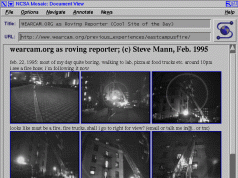What Google did for organizing information online MESH Cities will do for aggregating, organizing, and implementing information about how we design 21st Century cities.
How is that possible? Well, we’d agree that Kevin Kelly is right about the Net being the largest most reliable machine ever built. And that machine doubles in its capabilities every two years or so. Layer onto that truth the phenomenon of any information-capable object being part of the so-called “Internet of Things“, sprinkle in some smart city infrastructure, and you have the means to solve the big challenges of modern cities.
How does it work? City design has long been a hit or miss project. Big, top-down planners roll out solutions like Brasilia while bottom-up design advocates believe city building rises organically from neighbourhoods. Who is right? In a way, both are… but that’s not the argument any more. Today we have the tools to understand in the most detailed and robust way ever how cities are actually used. MESH Cities can, like Google, look at entire populations, follow what they do in broad ways, and use complex algorithms to see what works in cities and what doesn’t. The nice thing is that these information-driven solutions go beyond politics (that assertion will be the subject of another post later, but we have empirical evidence that governments and the people who elect them tend to believe big truths when they have access to them in a transparent marketplace).
MESH Cities’ mission is to help build the information solutions that will be the basis of tomorrow’s livable cities. This is not a fantasy. The tools are available to us just like they were available to Google at the end of the last century. What remains to be seen is what we do with them.







